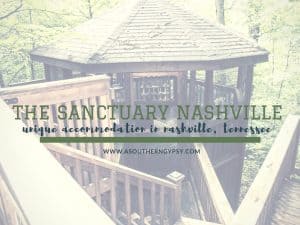The Best Time to Go to Smoky Mountains – The Best Things to Do in Each Season
The Great Smoky Mountains will forever be one of my favorite places in the world. Close to home but always a breathtaking place to visit, it is perfect for when I need to get away but can’t go too far.
The park is located in East Tennessee and West North Carolina starting just on the edge of Gatlinburg and Pigeon Forge.
Although the park is open daily year-round, some visitor centers, campgrounds and historic attractions close during the winter months. The fall, along with summer, are the most popular times to visit the park with October being the busiest of the fall months. The summer is definitely peak season for the park with July being the most popular month.
Despite the peak times, the Smokies are a colorful place. Emerald greens in the summer, a fiery wave of colors in the fall, the pinks and purples and yellows of wildflowers in the spring, and even the bright white and crystal blue in the winter. The good thing is you’ll be astounded by the beauty of the Smoky Mountains no matter when you come and it really just comes down to preference and priorities.
This post was sponsored by Moon Travel Guides and I was provided with a copy of Moon Great Smoky Mountains National Park. All opinions are, of course, my own.
This post may contain affiliate links. Please see our disclosure.

Fall in Great Smoky Mountains National Park
Weather
Call me basic, but the fall is my favorite season and is one of my favorite times to visit the Smokies. Temperatures hover between 60-80 degree days, cooler nights (hoodie weather!), and little to no humidity. The haze begins to clear up this time of year. Expect freezing temps and even snow at the higher elevations by November.
The fall foliage and lower temperatures draw in visitors from all over.
Cades Cove
The Cades Cove Loop consists of 11 miles through the Great Smoky Mountains National Park. You can either enjoy a picturesque drive, get out and stretch your legs on the trails, or get a history lesson as this was a settlement in the early 1800s. There are plenty of historic buildings including churches, log homes, barns, and cemeteries.
This is also the best place to see black bears in the wild as well as deer, turkey, and more.
With the fall colors, the pleasant weather, and the abundance of wildlife, fall is an incredibly good time to plan a Cades Cove visit.
Leaf Peeping
The fall colors typically start displaying in mid-September, but the crisper brighter colors in October. However, rates and crowds will get higher.
The trees start transitioning to the fantastic red, yellow and orange colors in late September to early October. By mid-October to early November, the colors peak and it is stunning. SmokyMountains.com has a proprietary peak fall prediction tool that can help you pinpoint the exact time to visit.
Cataloochee Valley to See Elk
There’s nothing quite like spotting a majestic elk in the wild for the first time.
While you’ll have chances to see some wildlife here throughout the year, especially if you visit at the time of the day when animals are most active, fall is one of the best times of year to see wildlife.
Elk are native here but were practically decimated due to hunting. In 2001, they were reintroduced to the park via 25 elk. Today, they believe roughly 200 elk roam the park. The Cataloochee Valley is the best place to see them. Make sure to head there at sunrise or sunset as this is when they’re active.
Before you go, make sure you know how to stay safe near wildlife and how to keep them safe! Never approach animals too closely, and never feed them. It is illegal to approach elk within 50 yards or to disturb/displace the animal at any distance.
Winter in Great Smoky Mountains National Park
Weather
In the lower valleys, winter is generally mild with highs reaching the 50s during the day. Nights are cold and subfreezing temperatures during the day are still possible. The higher elevations will be much colder (and dipping below zero some) with snowfall common.
Holiday Festivals
When you’re visiting the Great Smoky Mountains State Park, you may be staying in Gatlinburg, Pigeon Forge, or other surrounding towns. They definitely decorate with all of the holiday lights so make sure to get in the festive spirit. Even if you’re staying in the park but need a dose of “city” life, head into town to take in the lights, grab a jar of moonshine, and enjoy one of the many festivals.
Skiing
The one and only time I went skiing was in the Smokies – read this if you’re interested in why I’ll never go skiing again.
However, many love skiing and while it may not be the next big ski destination, there are still several locations in and around the Great Smoky Mountains for snow skiing, snow tubing, snowboarding, and more.
- Ober Gatlinburg includes skiing, snowboarding, and snow tubing. Equipment rental and lessons are available via nine trails, 400 ft long snow tubing lanes, indoor ice skating arena, and more.
- Cataloochee Ski Area (Maggie Valley, NC) includes skiing on 14 slopes and six lanes of snow tubing.
- Appalachian Ski Mountain (Blowing Rock, NC) includes skiing on 11 slopes, three terrain parks
- Beach Mountain Resort (Banner Elk, NC) is the highest ski area in the area. Includes skiing (15 slopes), snowboarding, snow tubing, and indoor ice skating
Winter Hiking
Some trails and campgrounds are closed in the winter, but there are still plenty that are open. Not only will the trails be quieter, but wildlife viewing may be easier due to less foliage on the trees. Some great winter trail options include:
- Andrews Bald
- Charlies Bunion
- Porters Creek
By hiking in the winter, you also have the chance of seeing frozen waterfalls. Waterfalls are beautiful when they’re in full flowing force, but have you ever seen a frozen waterfall? It’s breathtaking and not just because you’re cold.
Laurel Falls is a moderate hike on the north side of the park whilst Mingo Falls (just outside of the park) and Tom Branch Falls are easy to get to in the southern region.
One waterfall you can drive to is Meigs Falls along Little River Road.
Polar Express Train Ride
The Great Smoky Mountain Railroad operates through January 1st. Adventures departing from the Bryson City, NC depot include rides along the Tuckasegee River that pass by the movie set of The Fugitive, and a Polar Express train ride through the quiet wilderness with a stop at the North Pole. For an added treat, check the train schedule for dates the old steam engine is running. www.gsmr.com
I took this train ride last spring. It was really exciting to ride on an old steam engine and pretend I had stepped back in time a bit. I can only imagine how fun the Polar Express is!
Spring in Great Smoky Mountains National Park
Weather
Springtime brings 70-80 degree days with less humidity than summer. Rain showers are common, wildflowers are blooming and late snowfall in the higher peaks is still possible. Nights may still be cool.
Wildflowers
The best thing about springtime is all of the new life – wildflowers blooming and trees are becoming green again! Seeing the wildflowers in the Smoky Mountains in the spring is a worthy enough reason to visit on its own. The mountains are home to more than 1,500 different kinds of beautiful flowers scattered all around the park.
To experience the best wildflowers, make sure to go on a hike in one of the countless trails in the park. One of the most popular ones for wildflowers is the Porters Creek trail – a four mile round-trip hike that runs along the peaceful mountain stream of Porters Creek. Here’s a quick list of some of the most popular wildflower viewing trails in the park:
- Cove Hardwood – Self-guiding Nature Trail
- Schoolhouse Gap Trail
- Little River Trail (mid-March through April)
- Porters Creek Trail (late March through April, first 1.5 miles)
- Appalachian Trail between Newfound Gap and Road Prong Trail (mid – April through May)
Here’s a quick run down of some of the flowers you’re expected (not guaranteed, of course) to see each month:
- March: Spring-beauty, Trout-lily, Sharp-lobed Hepatica, Jack-in-the-pulpit
- April: Violets, Wild Ginger, Yellow Mandarin, White Trillium, Dutchman’s Britches
- May: Blue Phlox, Foamflower, Lady’s Slippers, Show Orchid, May-apple
- June: Sundrops, Goat’s Beard, Speckled Wood Lily, Woodland Bluets

Waterfalls
The winter showcases the waterfalls frozen in time, but the spring brings that roaring water back to life so make sure to get over to the Great Smoky Mountains for the three W’s – wildflowers, waterfalls, and wildlife. I just made that up!
Some popular options for waterfalls:
- Grotto Falls – located off the Roaring Fork Motor Trail, this hike is 2.6 miles round trip.
- Abrams Falls – this relatively easy hike located in Cades Cove is 5 miles round trip and leads to a 20 foot waterfall.
- Hen Wallow Falls – this 90 foot waterfall is stunning and arguably one of the best waterfalls in the park. The hike is moderate and roughly 4.5 miles round trip.
Cades Cove
As mentioned in the fall section, Cades Cove is one of the most popular things to do in the Smoky Mountains in the spring and really any time of the year! If you want to see the Smokies from your car, taking a scenic drive is a great way to experience the mountains.
In the spring, animals will be coming out from hibernation since it is so warm, and Cades Cove is arguably the best place to see them. Wildflowers are scattered throughout the empty fields, making the landscape picturesque. Plus, you will want to stop and explore the historic buildings and sites since the weather will be so nice!
Summer in Great Smoky Mountains National Park
Weather
Typically, summers in the Smokies are hot and humid at the lower elevations and warm and pleasant up high, with frequent thunderstorms. Air quality often takes a dip in the warmer months, with hazy days more common.
White Water Rafting
Beat the heat and humidity of summer by going white-water rafting on the Nantahala or Pigeon Rivers.
Synchronous Fireflies
During the Summer, people flock to the Smokies to see the synchronized fireflies. This only happens here and only one time a year. The two week time period varies every year but typically falls during the first two weeks of June. Elkmont is the place to view the fireflies which are located within the Great Smoky Mountains National Park.
The event is ever-popular and thus the park instituted a lottery system to obtain the parking passes for the shuttle period. There’s quite a few things to know about planning a trip to Elkmont to see the fireflies and it needs to be planned well in advance – as in start planning late this fall/early winter for next summer.
Hike Mt. Leconte
The Alum Cave Trail to Mount LeConte is a 10.5 mile heavily trafficked out and back trail near Gatlinburg. The trail is rated as difficult but is also one of the best hikes in Tennessee and the entire park.
If a full round trip in one day is a bit much, you can hike up, stay at Leconte Lodge, and hike back the next day (or several days later).
Dollywood
Dollywood is one of the most popular theme parks in the Southeastern United States. With a Smoky Mountain theme, you never find yourself missing out on thrill rides, entertainment, food or festivals – and maybe even Dolly, herself?
Nestled in the Great Smoky Mountains, Dollywood is located right off the main road in Pigeon Forge making it a fantastic addition to your Pigeon Forge, Gatlinburg, Great Smoky Mountains National Park or Knoxville itinerary.
Dollywood is closed during the winter months and is a great addition to a trip the rest of the year, but I kind of just equate theme parks with summertime plus you can ride all those water rides to cool off!
Catch the Sunrise from Clingmans Dome
A longtime sunrise advocate, they don’t get much better than the Smokies. Watching the sky change colors while covered by a misty haze, you’ll quickly realize where the Smokies got their name. Clingmans Dome is the highest point in the park which means a great vantage point for sunrises – or sunsets if you really want to be that way.

Pick up the Great Smoky Mountains National Park Moon Guide book to plan your future trip.
RESOURCES
Planning a trip for the future? Here are my resources.
Interested in starting a blog? Use these resources.
Read my other outdoor posts.
- 9 Weird Things To Do In Dublin, Ireland - April 13, 2024
- 14 Weird Things To Do In Indianapolis, Indiana - April 13, 2024
- Bird Tourism: Getting Started - February 29, 2024




